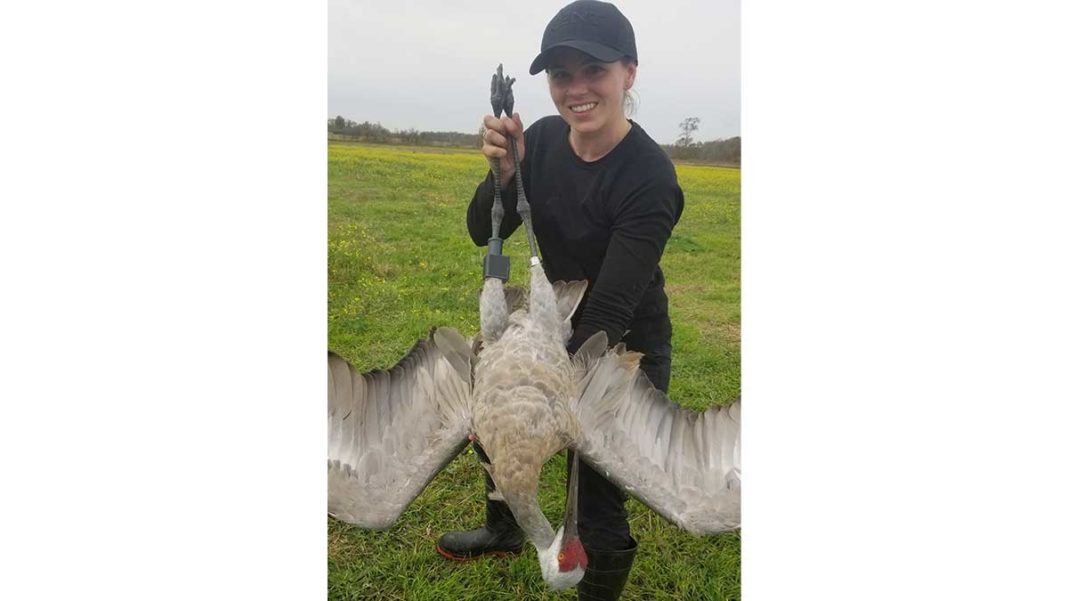MANITOULIN – With an additional five more Sandhill cranes to be outfitted with transmitters this week, the Canadian Wildlife Service (part of Environment and Climate Change Canada) and the University of Waterloo will conclude year two of its study of the birds and how their movements relate to agricultural land uses. According to the study proponents, information from the study will be vital to understanding the nature of conflicts between Sandhill cranes and agricultural producers and how those conflicts can be mitigated.
“We have been capturing Sandhill cranes and attaching transmitters to the birds on Manitoulin Island. We have four out of the nine we need on the island, and expect to be able to put transmitters on five more birds while we are on the Island,” said Christopher Sharp, population management biologist for Environment and Climate Change Canada. “So far we have placed 27 transmitters of our overall goal of 32 Sandhill cranes this year.”
Mr. Sharp pointed out work crews including Kelly McLean, a PhD candidate from the University of Waterloo, have already covered the areas of Azilda, Laird, Desbarats, Bruce Mines and now Manitoulin Island. “On Manitoulin Island, with work having started on September 25, we have put transmitters on two Sandhill cranes near Gore Bay and two south of Mindemoya. The birds are concentrated in the area south of Mindemoya, Gore Bay and Spring Bay.”
“The primary objective of this project is to provide data on the movements of Sandhill cranes in relations to agriculture; and providing the science based information for mitigation that would provide farmers a more comprehensive set of tools to deal with Sandhill crane conflicts,” said Mr. Sharp.
Farmers have been lobbying for a solution to the growing problem of Sandhill crane depredations on their grain corps. The large migratory birds currently enjoy protected status in Ontario after their numbers were severely depleted.
Since Sandhill cranes became protected their numbers have rebounded significantly and Island farmers have joined the call for a renewed hunting season. This study is seeking to establish the interactions between the cranes and agriculture and prior to beginning the study a call had been put out to producers to allow access to their farms in order to gather data.
As part of the study work, crews are looking to access agricultural fields where cranes are actively feeding or loafing throughout the day. Crews are capturing cranes using a rocket-propelled net, attaching transmitters to the birds, then releasing them.





